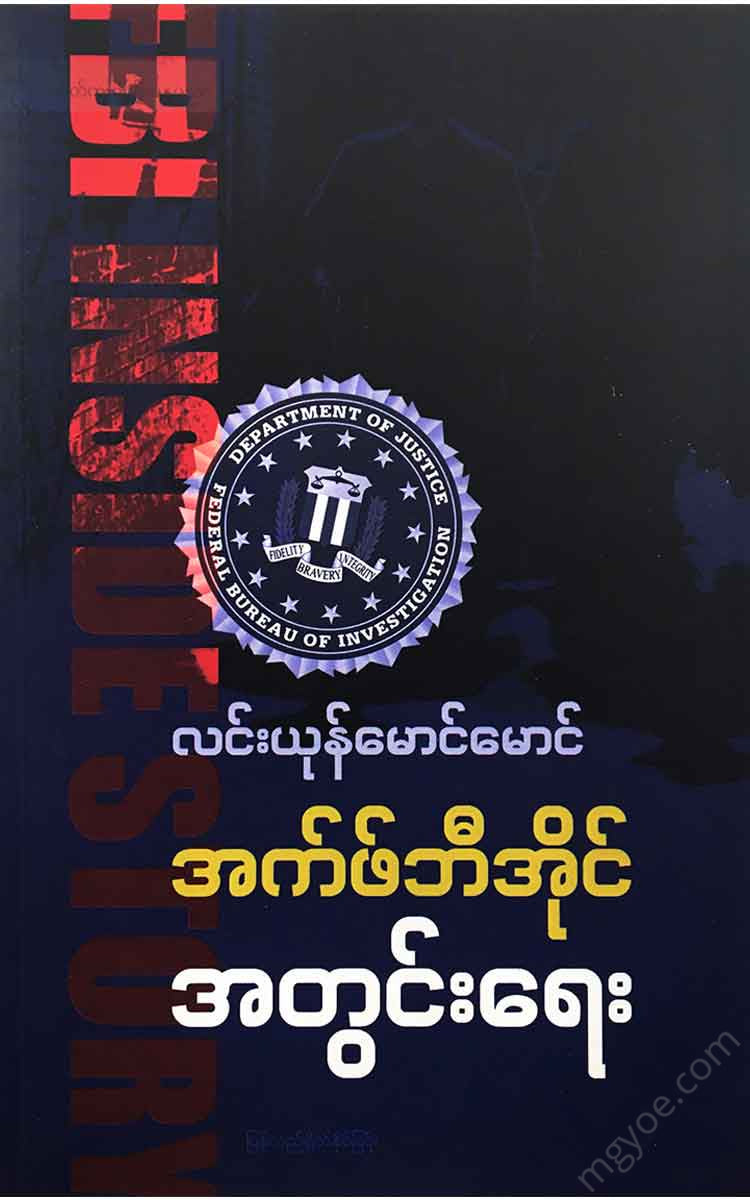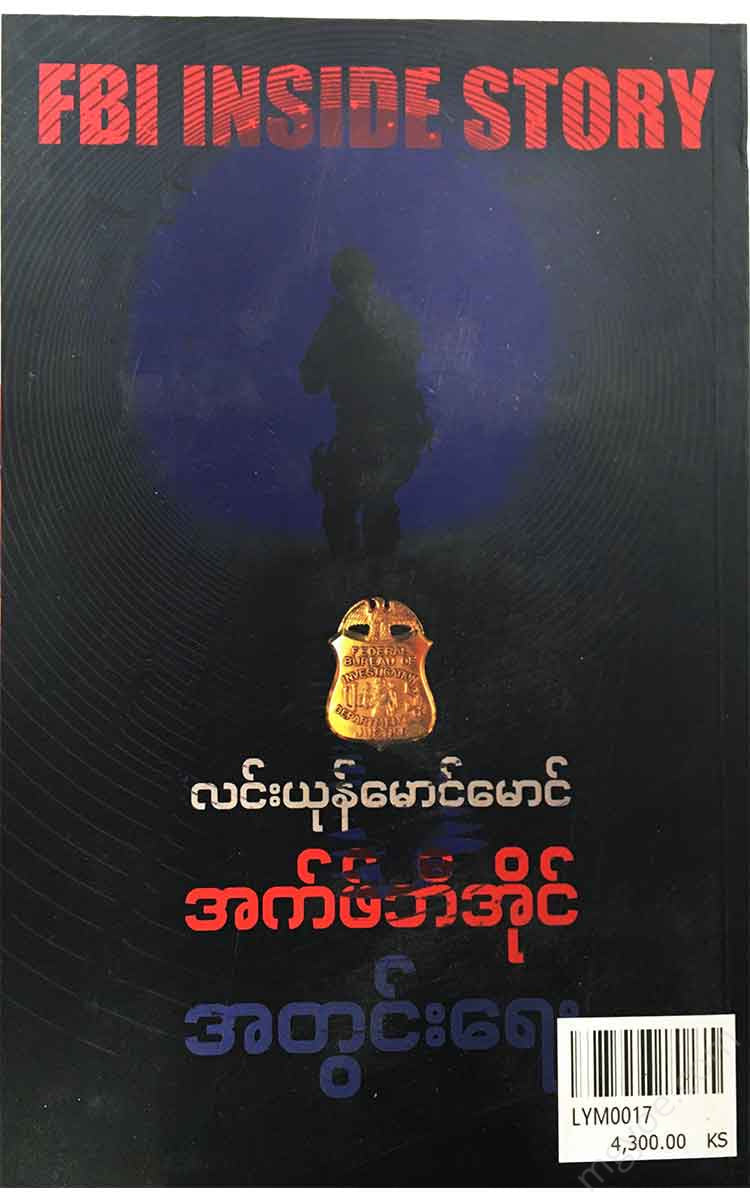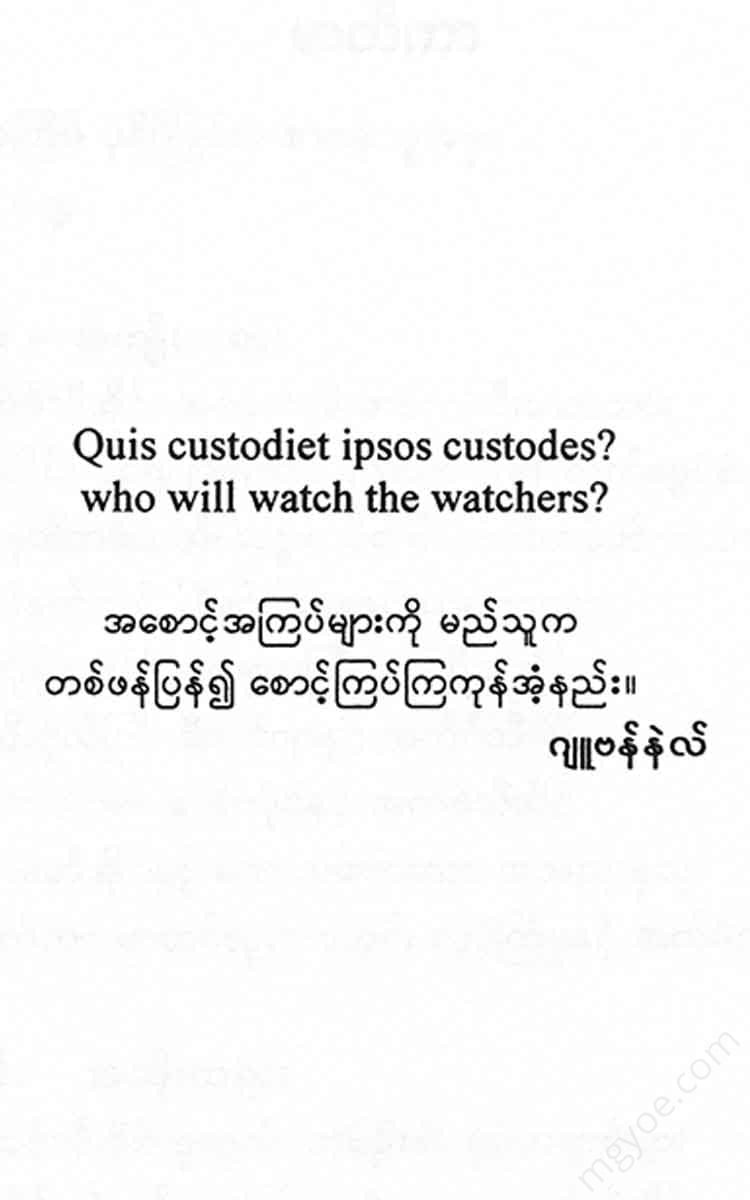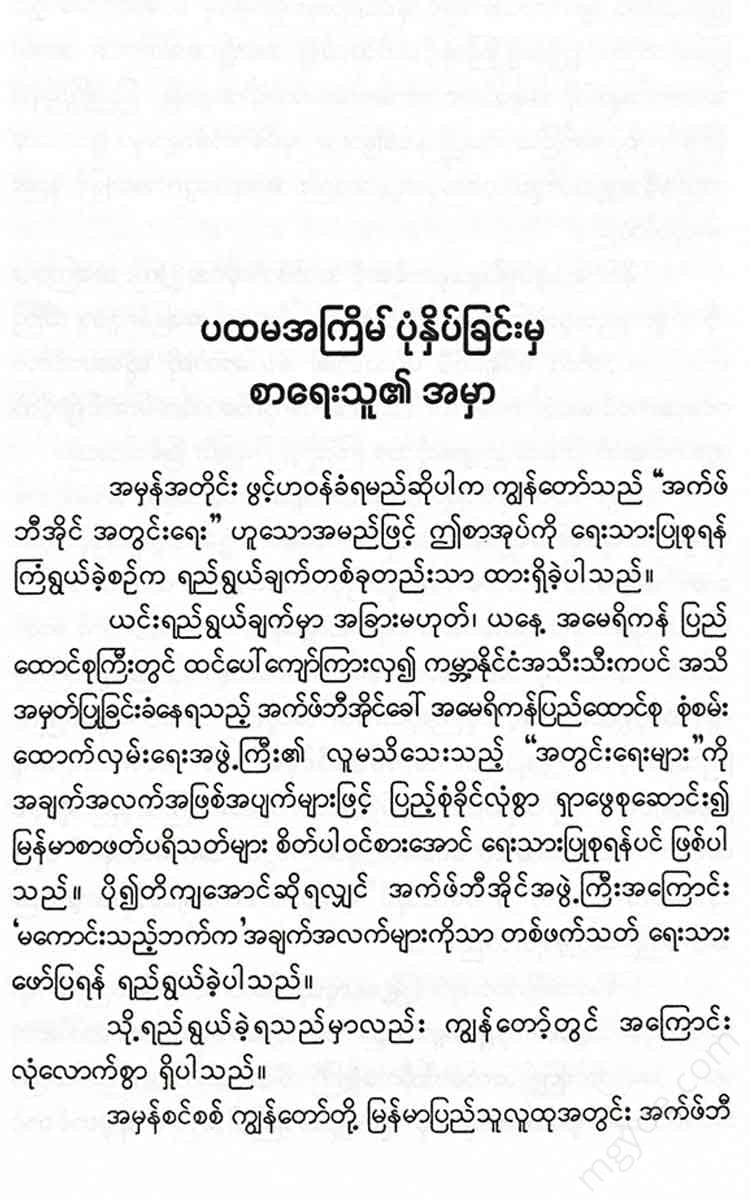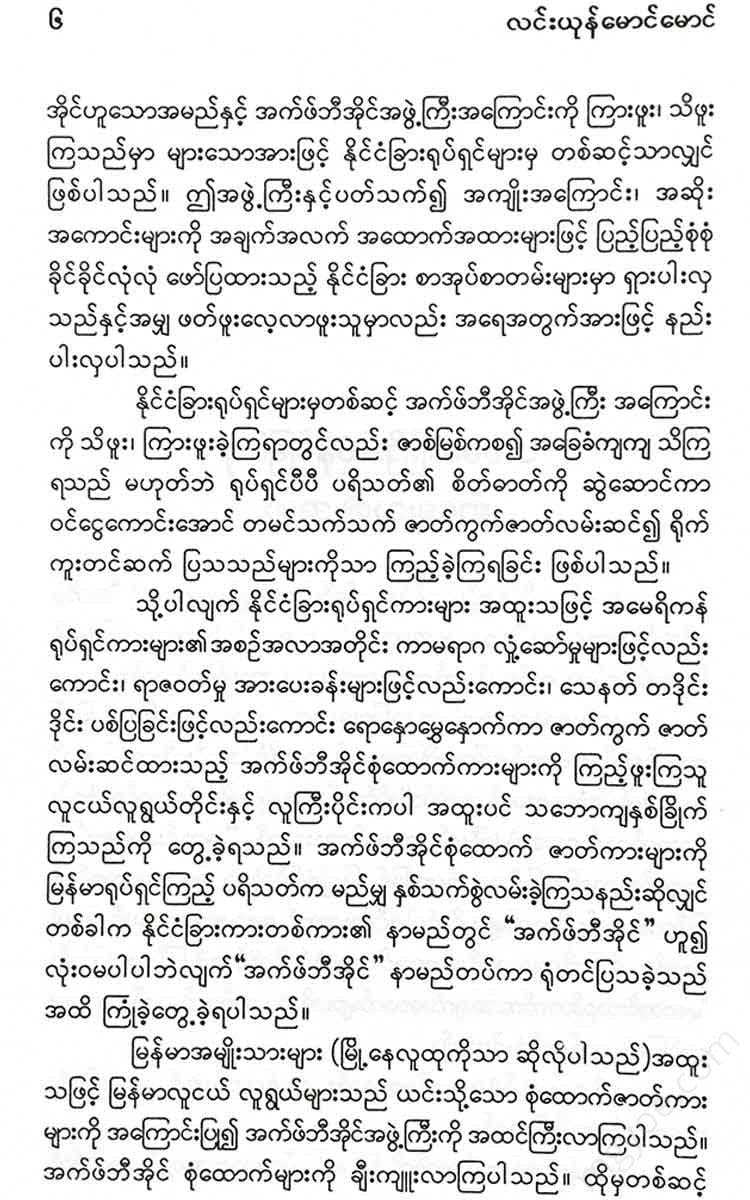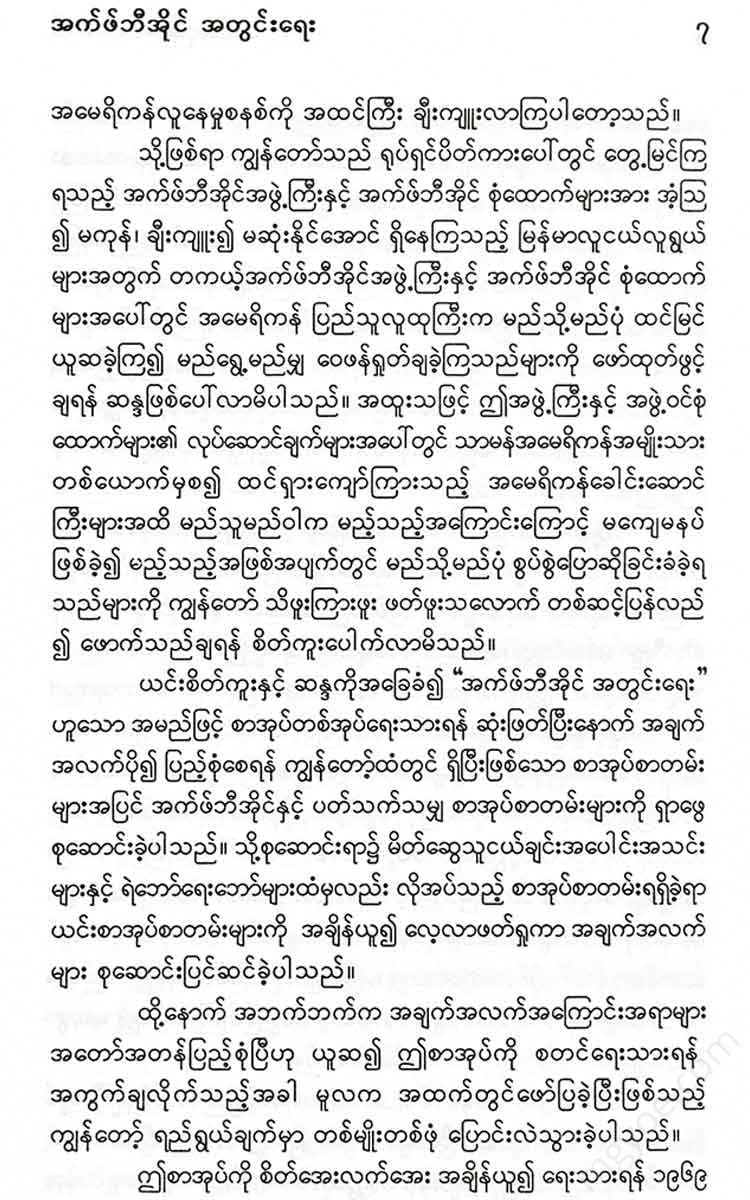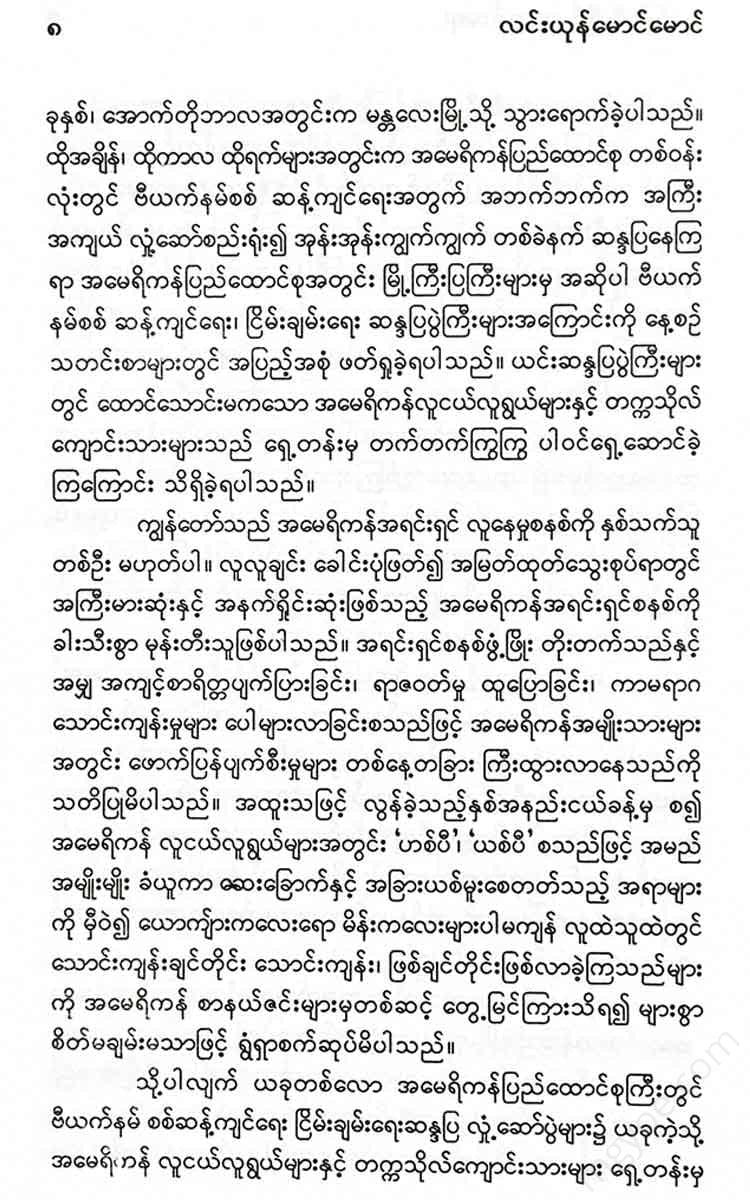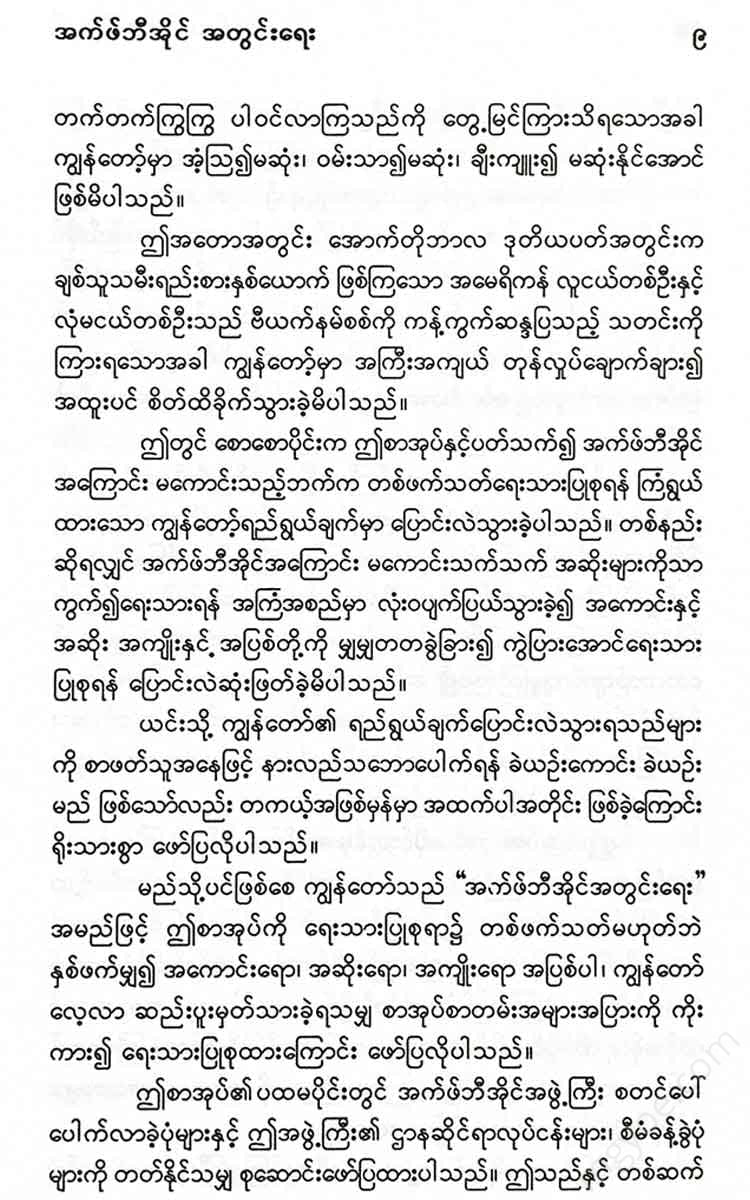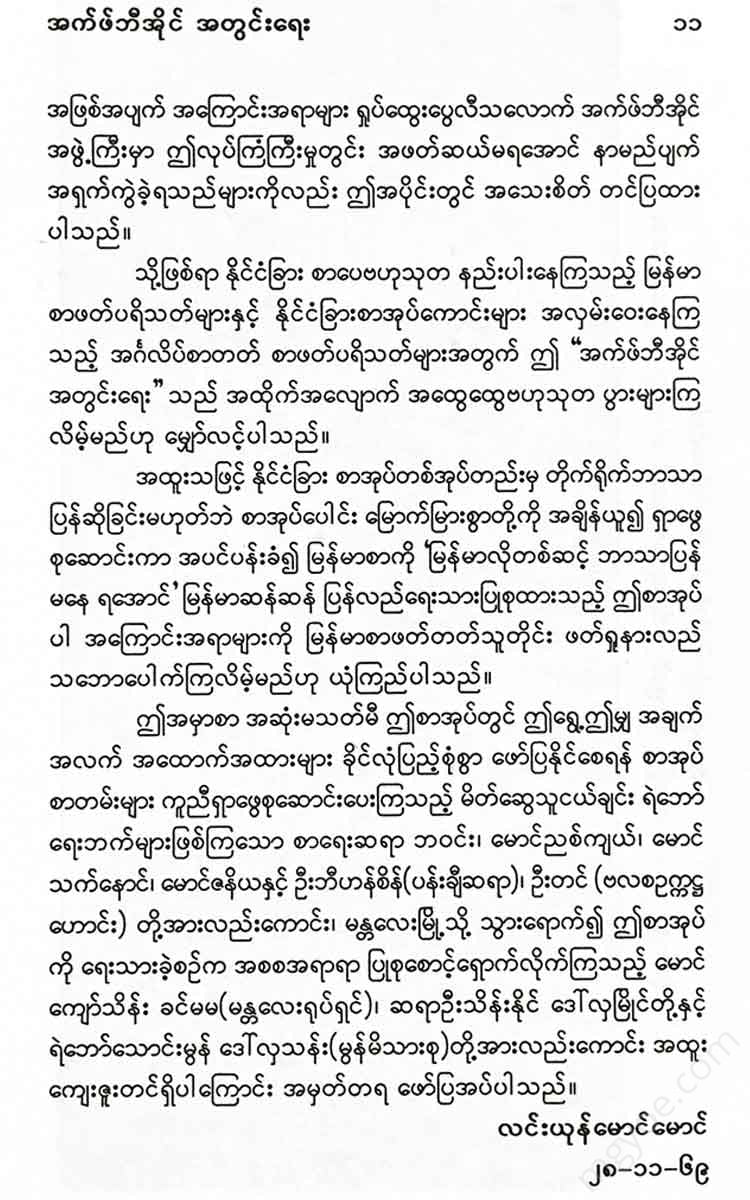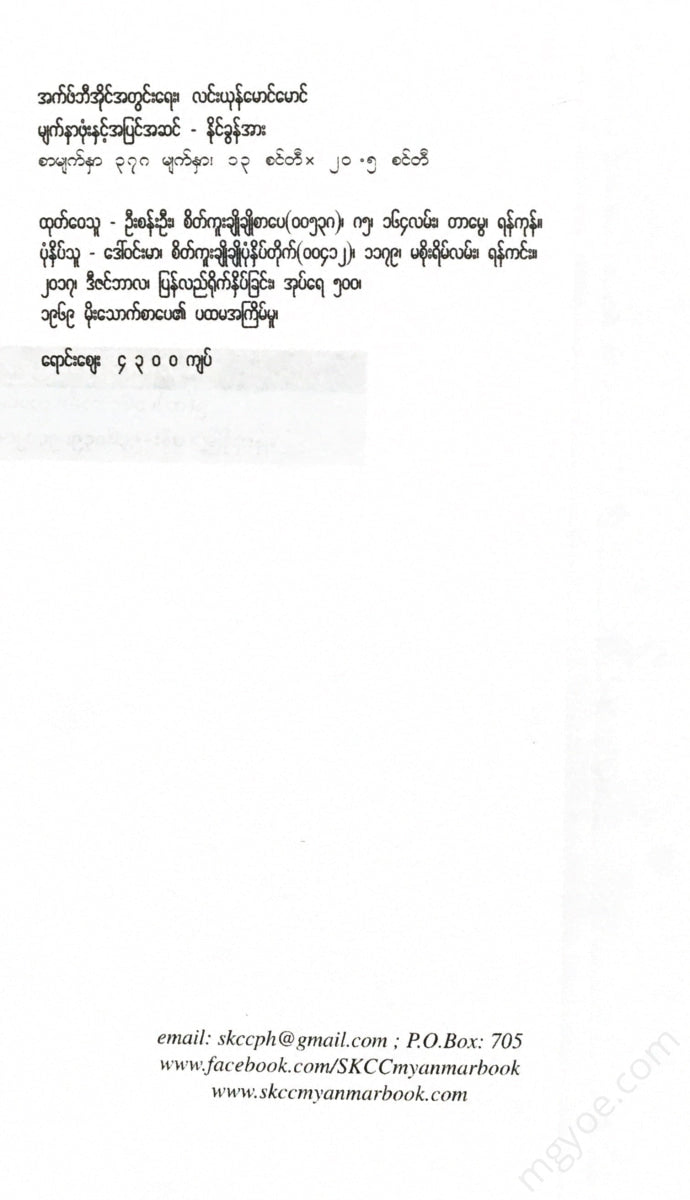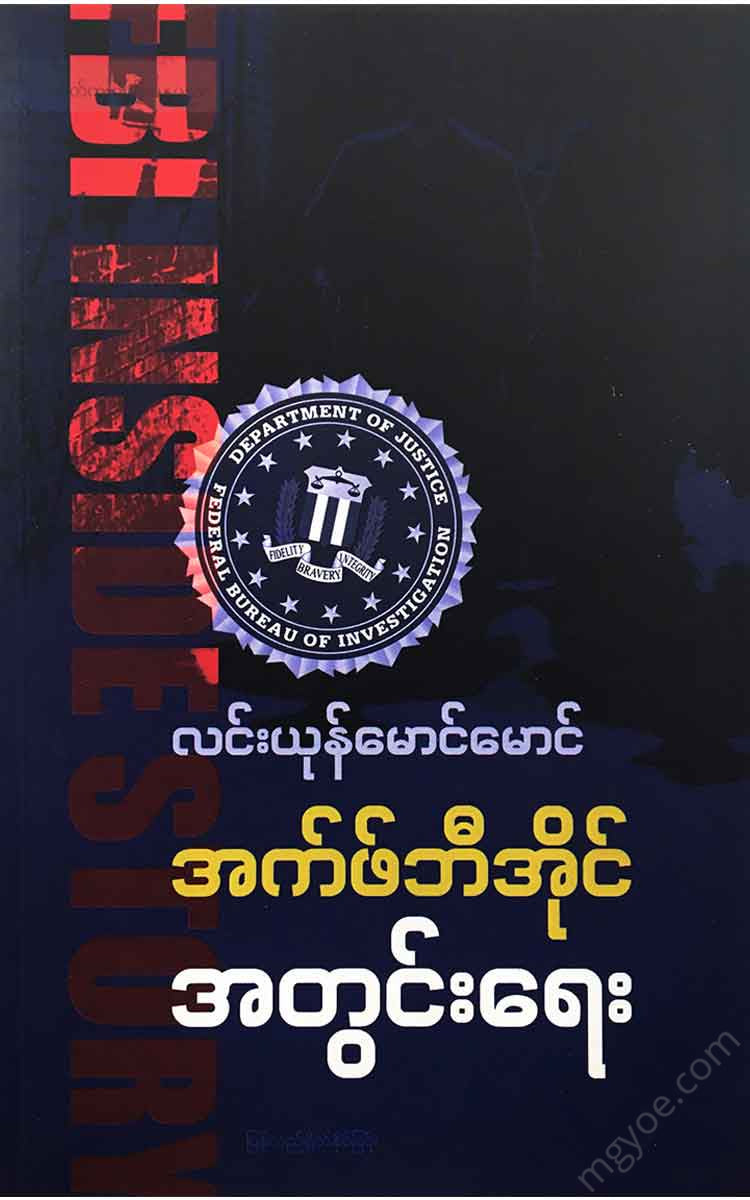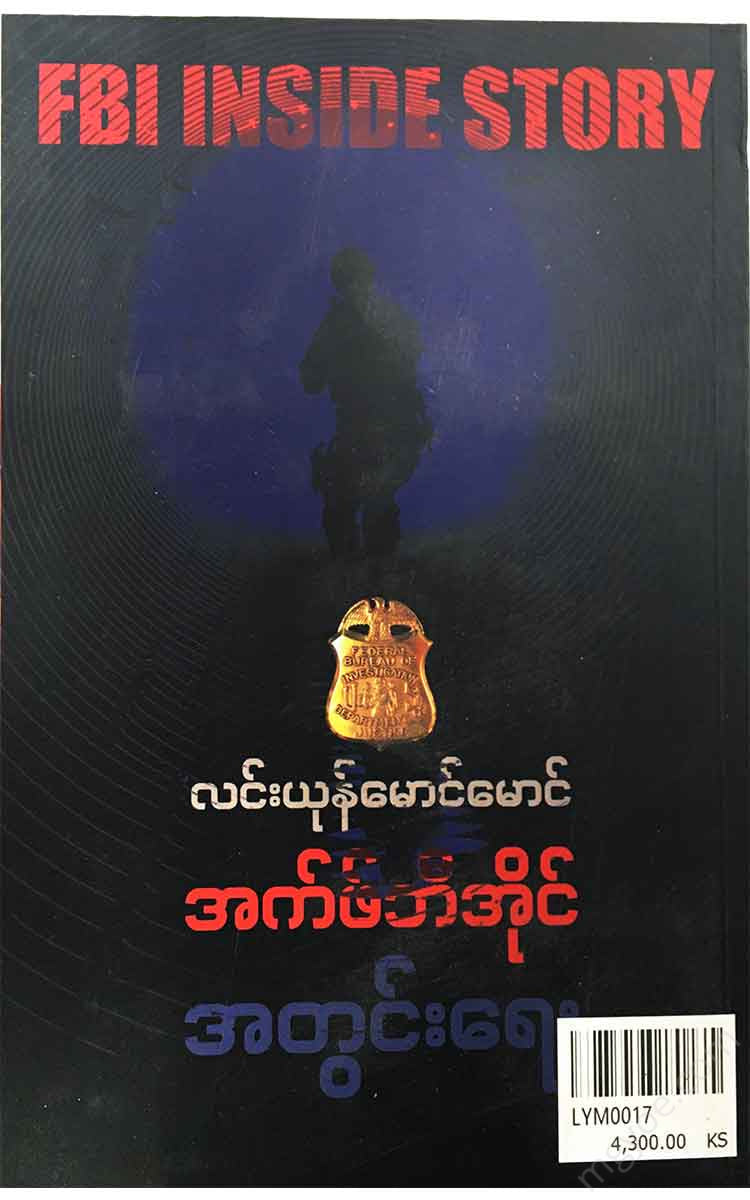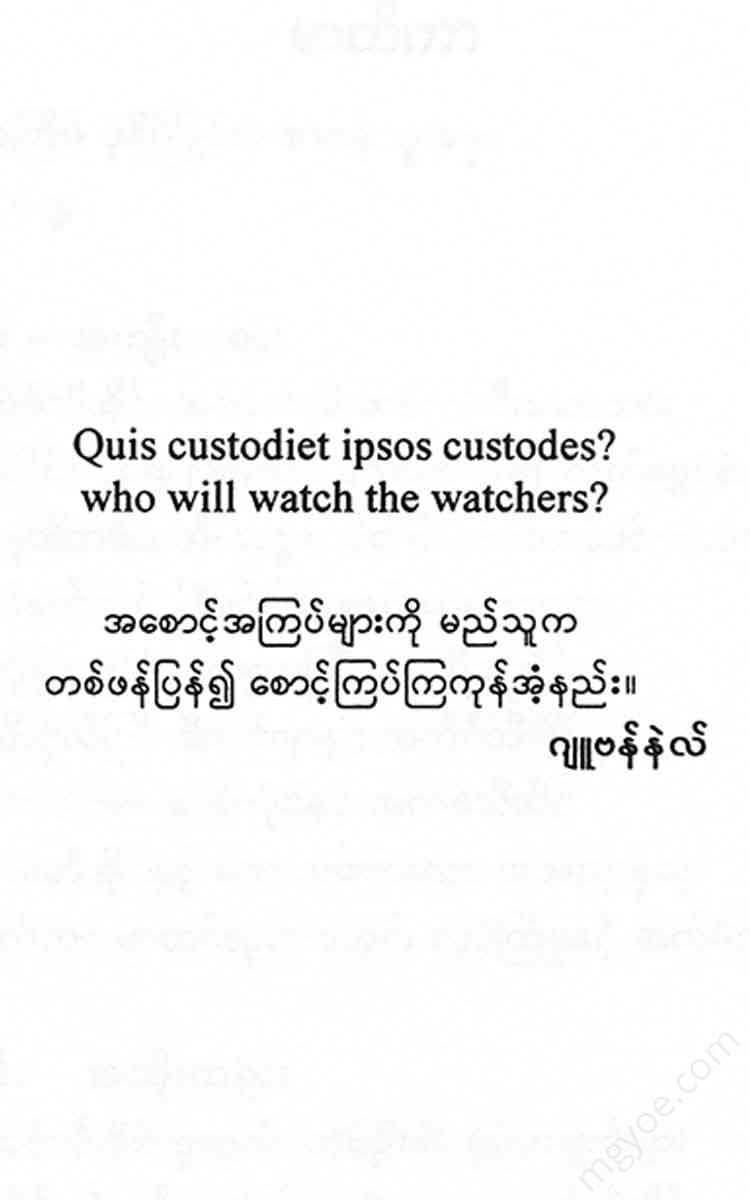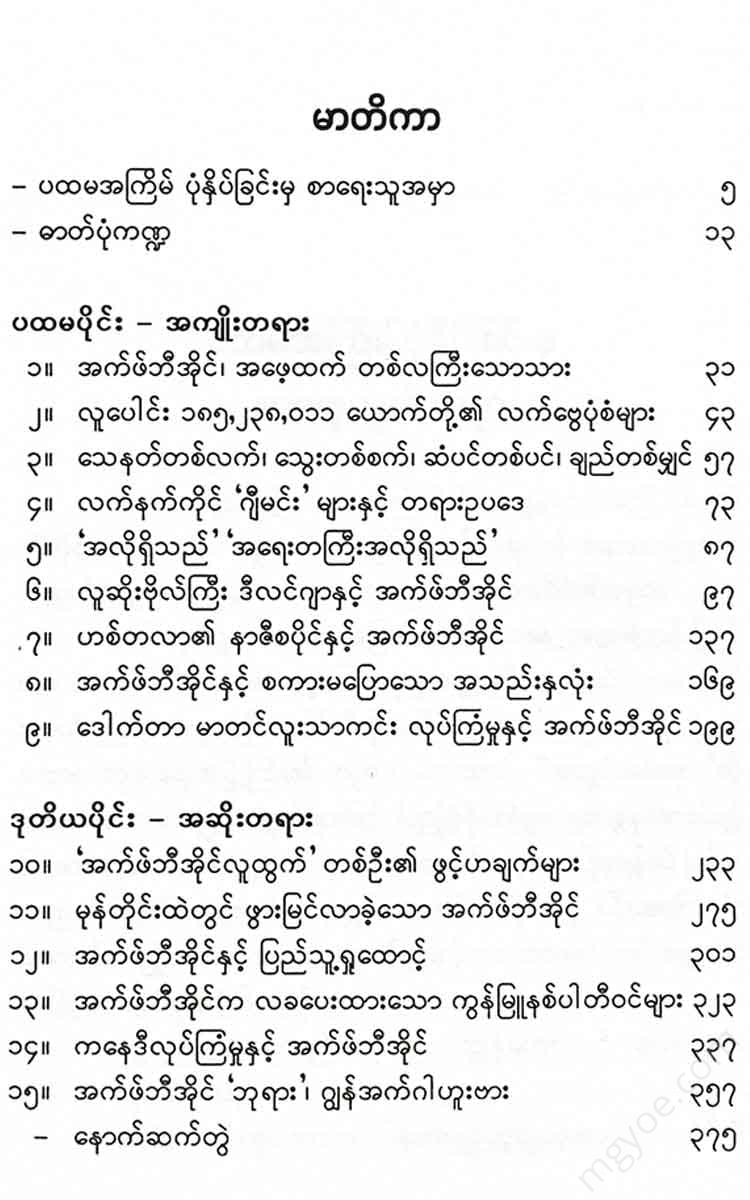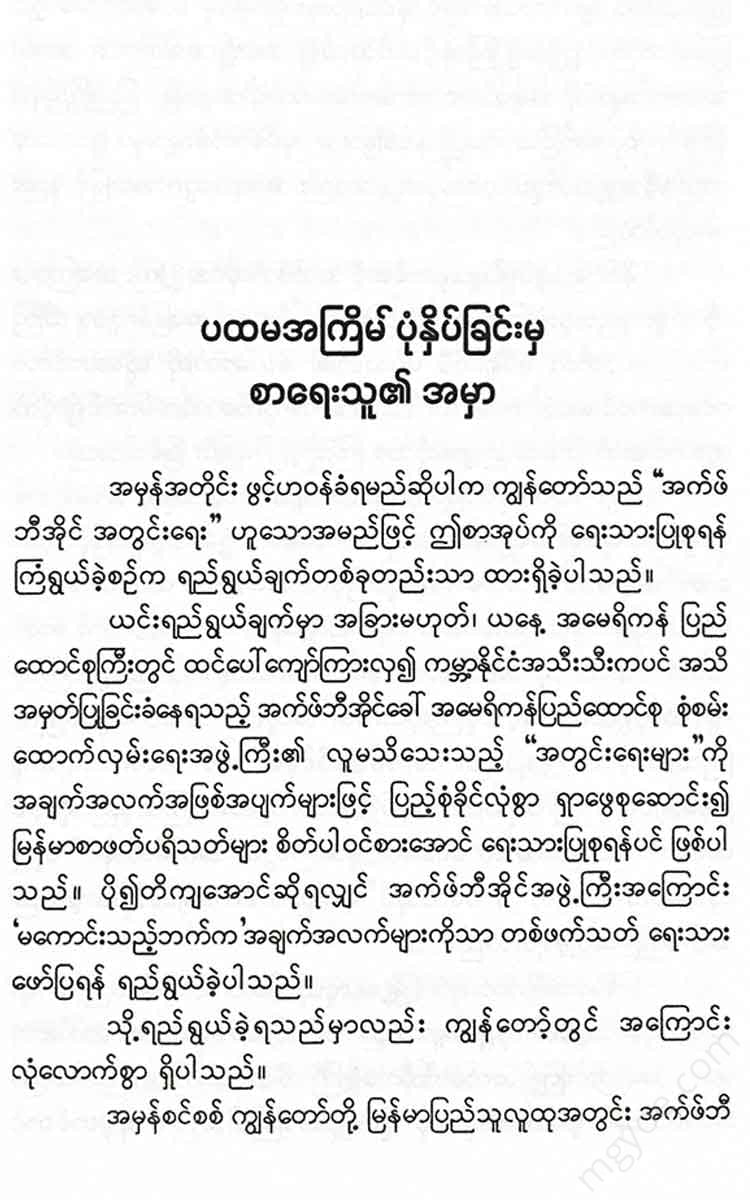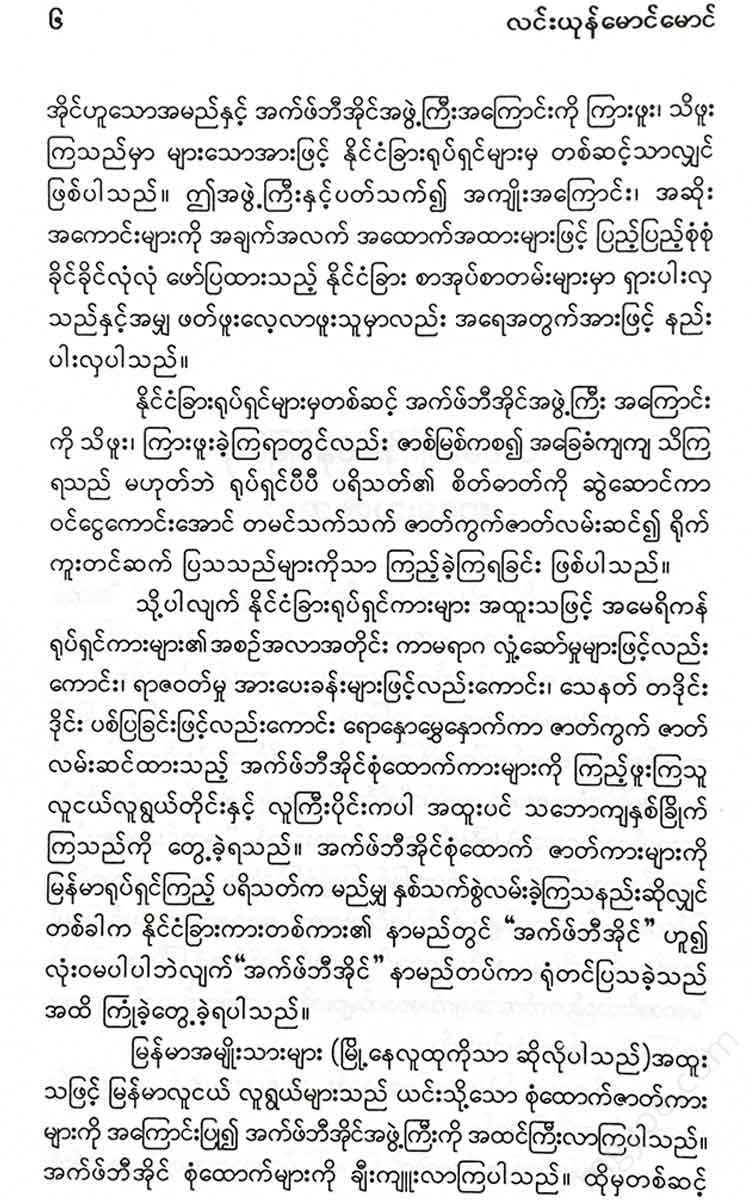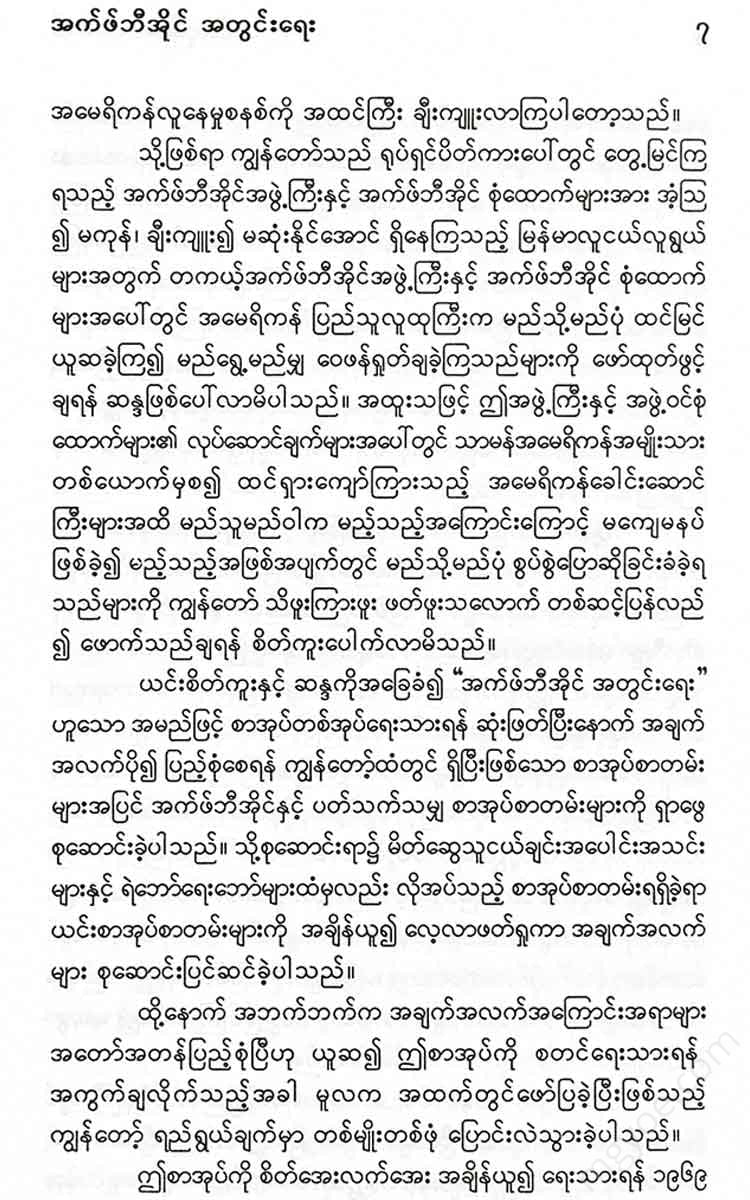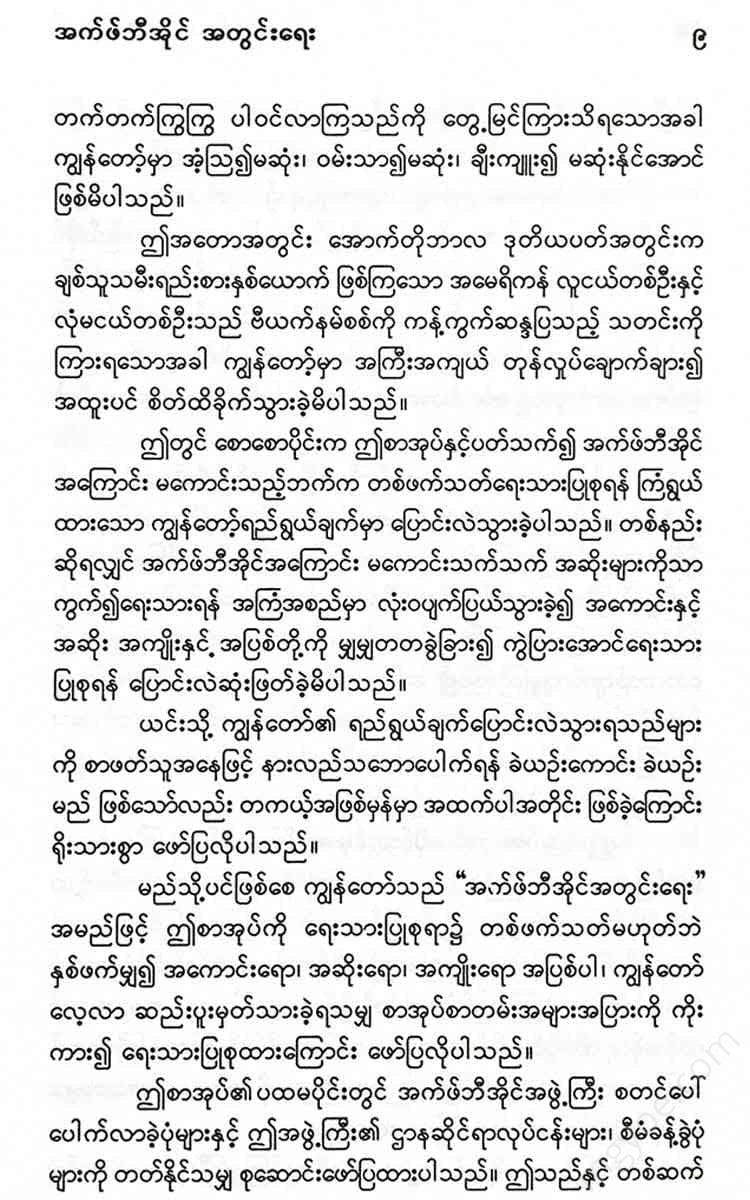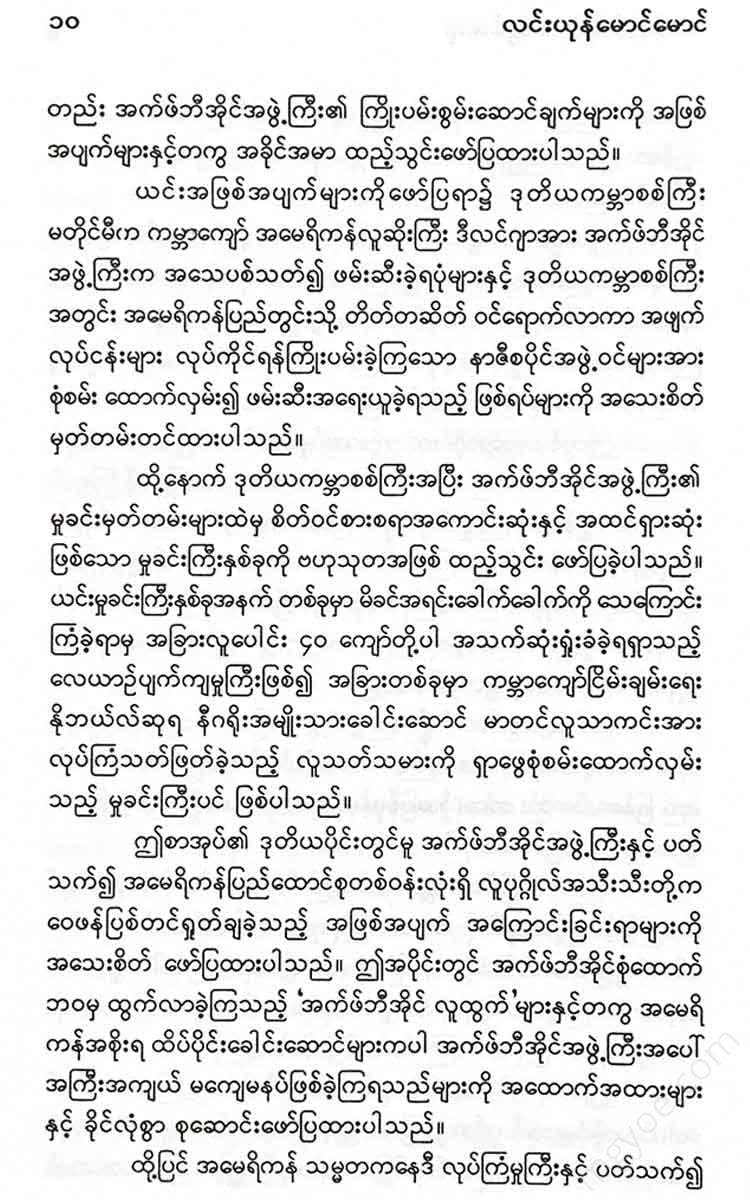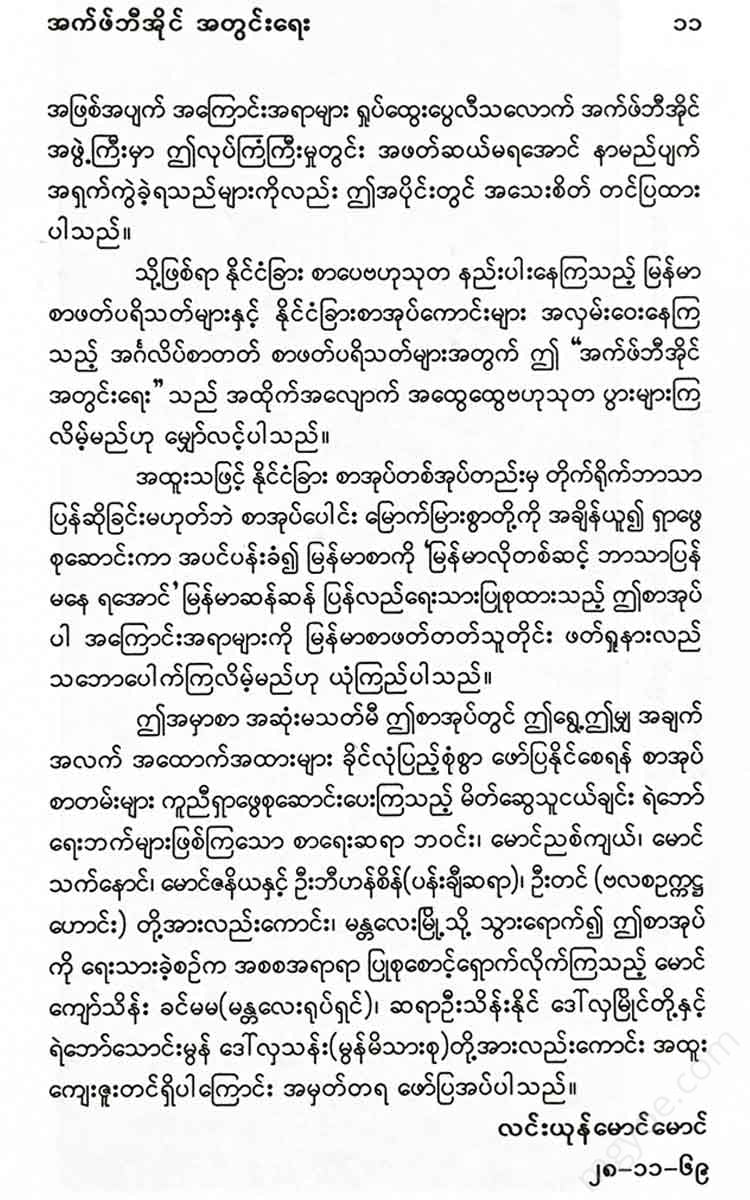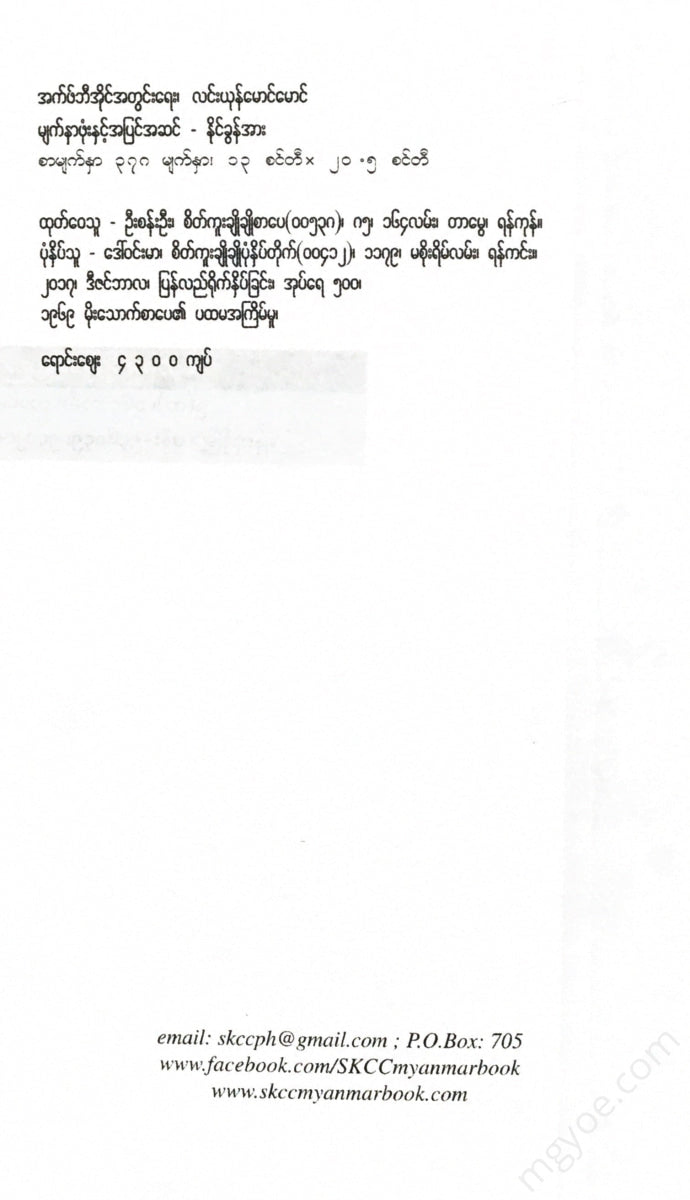စိတ်ကူးချိုချိုစာပေ
Lingyun Maung Maung - FBI Secretary
Lingyun Maung Maung - FBI Secretary
Couldn't load pickup availability
This four-story building, which is as imposing as it is massive, is often seen by everyone who passes by, some with a casual glance, and some with a keen eye. Especially for those who have ever been to Washington, D.C., the United States, there are many who have noticed this strange building on 9th Pennsylvania Avenue, one of the most central areas of this great city.
However, in the present-day space age of the twentieth century, thanks to the diligent and creative ideas of architects, the United States is crowded with large buildings that are as beautiful and mysterious as they are amazing, almost reaching the sky. If you look at it with the naked eye, Washington
(1. 9 th: Street; Pennsylvania Avenue.)
This building, which is only four stories high in the city, is nothing “strange” or “notable.” The massive brick walls, the reflective glass windows, and the American flag, which flutters gracefully in the wind from the top of a long pole in the middle of the second-story balcony above the main entrance, are all impressive. On either side of this flagpole are two long, large, polished columns that seem to have been modeled after the works of Roman architects. Thus, if we look at this entire building as a whole, apart from the adjectives “strong and large” and “magnificent and majestic,” there is no need to think of it as a beautiful, mysterious, or wonderful building, and it is just an ordinary building among those buildings.
However, for Washington residents who pass through this neighborhood every day, they often pass by this building and look at it involuntarily. For those who come to Washington for a short time from all over the United States for some reason, this building is also a “special landmark.” Why?
If I were to answer this riddle briefly and concisely, this building on 9 Pennsylvania Avenue in Washington, D.C., is not only imposing and imposing in appearance, but also, in its essence, the headquarters of the Federal Bureau of Investigation (FBI), a powerful and powerful agency that has shaken and shaken the hearts of all people throughout the United States, from priests and preachers to thieves, robbers and murderers.
Among the agencies under the United States government, there are two major organizations that are known by their three-letter acronyms in English: the Central Intelligence Agency (CIA), and the Federal Bureau of Investigation (FBI).
Of these two groups, the CIA is responsible for investigating and taking action against foreign spies throughout the United States, foreign embassies and those who are secretly trying to overthrow the U.S. government with the help of foreign aid, and those who are secretly plotting to assassinate American leaders. The CIA's main functions until World War II were to investigate and take action against foreign spies, foreign embassies, and Americans who are plotting to overthrow the U.S. government through foreign contacts. However, on September 1, 1939, in Europe,
(1. FBI: Federal Bureau of Investigation
2. (CIA: Central Intelligence Agency)
After the outbreak of World War II, on December 7, 1942, the Japanese Air Force bombed the American naval base at Pearl Harbor in the Pacific Ocean, and the Japanese government was unaware of the secret plan, which led to the CIA being caught unawares. After the war, and especially in the post-war period, the CIA expanded its operations by spending millions of dollars and sending CIA spies to every corner of the world.
Later, as there was hardly a country in the world without American CIA agents, in the second half of the 20th century, in the 1950s, there was no international political assassination, government changes, internal uprisings, and military coups that were not influenced by the CIA.
Thus, the CIA became notorious as a "big scoundrel" on the world political stage.
The FBI is now a non-political agency, responsible for investigating and prosecuting criminal cases throughout the United States.
This group was established under the U.S. Department of Justice on July 1, 1908, under the administration of U.S. President Theodore Roosevelt. At that time, the group was commonly known as the "Intelligence Agency," and President Franklin D. Roosevelt
(1. Theodore Roosevelt (1858-1919)
2. Bureau of Investigation)
The name Federal Bureau of Investigation (FBI) was officially introduced on July 1, 1935, under President Clinton.
It is a strange coincidence that the FBI was born and raised under one of the most powerful presidents in American history, and came of age under another equally powerful president with the same name.
During the reign of Theodore Roosevelt (1901-1909), the 26th President of the United States, the greatest problem facing the American government was the expansion of the productive forces and machinery of the growing capitalist system to the western states. In this way, private railroad owners and contractors who had to build railroads for the government, who had expanded forests and farmland in the western states to finance the country's development, "grabbed" public lands and timber in various ways. This problem became a major problem for the Roosevelt government. Especially since the thieves who "grabbed" such public property were "sly thieves" and behind them were government officials themselves, including members of the Senate and Congress, who were "thieves in disguise," the problem became even more difficult to deal with.
(1. Franklin D. Roosevelt (1882-1945) )
In addition, the Legal Affairs Department has not formed a “three-member team” or a detective team to investigate and punish such “major corruption” cases according to the law, so it has often been faced with the situation of watching with its hands closed while the accused is found, without providing evidence or filing charges. Sometimes, in a major case where the case is true, the accused is real, and the crime is serious, the Legal Affairs Department uses secret detectives from the Treasury Department or intelligence officers from the Post Office Department.
They were hired and used as "prosecutors" (or "government prosecutors") or "case officers."
When these hired detectives and “hired officers” were used to investigate major corruption cases and prosecute cases, sometimes twice, sometimes three times, new problems arose. The departments that hired detectives and officers often became dissatisfied with the Justice Department, which was often “borrowed.” They became greedy. The relevant Treasury and Post Office departments were unhappy that the Justice Department was using detectives who had been trained at great expense and time to be used in case of an emergency.
Meanwhile, as corruption of public property, government financial losses, and other irregularities increased day by day, the lack of a departmental intelligence team led to more and more problems.
